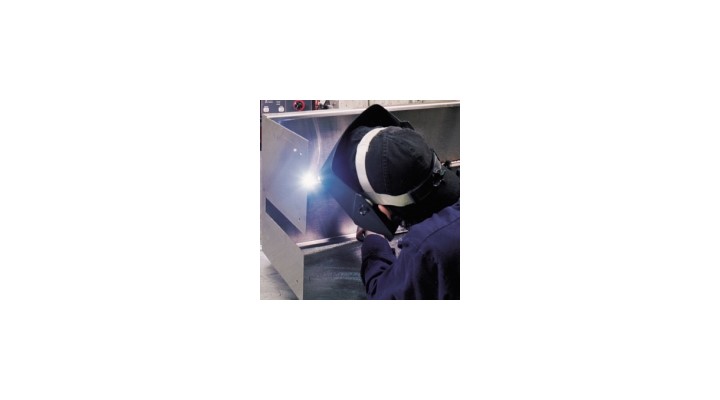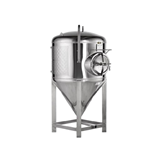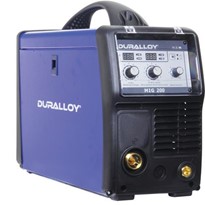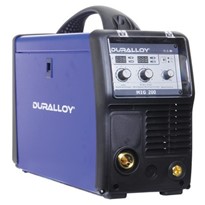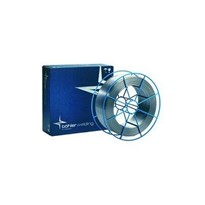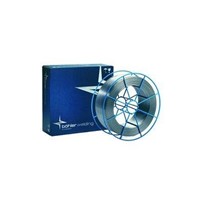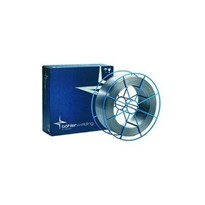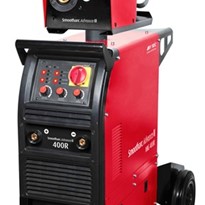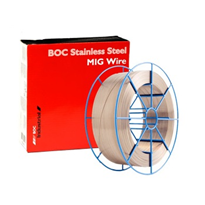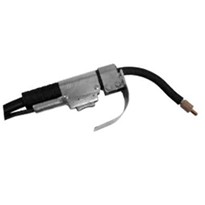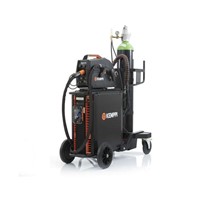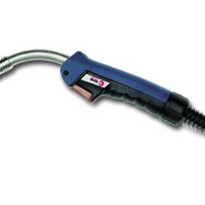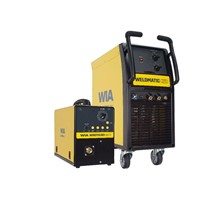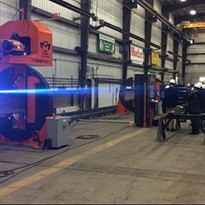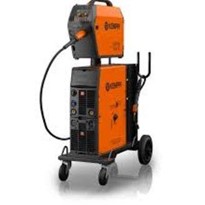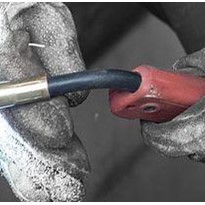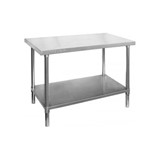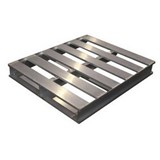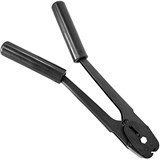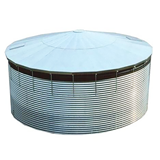When MIG welding on stainless, you usually have three choices of transfer depending on your equipment: spray-arc, short-circuiting, or pulsed-arc transfer.
Spray-Arc Transfer
Filler metals for gas metal arc welding stainless steel are specified in AWS - A5.9-93. Electrode diameters as great as 1/16-in., but usually 0.045", 0.035", and 0.030", are used with relatively high currents to create the spray-arc transfer. A current of approximately 300-350 amperes is required for a 1/16-in. electrode, depending on the shielding gas and type of stainless wire being used. The degree of spatter is dependent upon the composition and flow rate of the shielding gas, wire-feed speed, and the characteristics of the welding power supply. DCEP (Direct Current Electrode Positive) is used for most stainless-steel welding. A 1 or 2 per cent argon-oxygen mixture is recommended for most stainless steel spray arc welding.
On square butt welds, a backup strip should be used to prevent weld-metal drop through. When fit-up is poor or copper backing cannot be used, drop-through may be minimised by short-circuit welding the first pass. Forehand techniques are beneficial when welding with a semiautomatic gun. Although the operator's hand is exposed to more heat, better visibility is obtained. For welding plate ¼-in. and thicker, the gun should be moved back and forth in the direction of the joint and at the same time moved slightly from side to side. On thinner metal, however, only back and forth motion along the joint is used.
The more economical short-circuiting transfer process for thinner material should be used in the overhead and horizontal position for, at least, the root and first passes. Although some operators use a short digging spray arc to control the puddle, the weld is apt to be unduly porous.
Short-Circuiting Transfer
Power supply units with slope, voltage, and inductance controls are recommended for the welding of stainless steel with short-circuiting transfer. Inductance, in particular, plays an important part in obtaining proper puddle fluidity.
The shielding gas recommended for short-circuiting welding of stainless-steel contains 90 per cent helium, 7.5 per cent argon, and 2.5 per cent carbon dioxide. The gas gives the most desirable bead contour while keeping the CO2 level low enough so that it does not influence the corrosion resistance of the metal. High inductance in the output is beneficial when using this gas mixture. Single-pass welds may also be made by using argon-CO2 gas. The CO2 in the shielding gas will affect the corrosion resistance of multipass welds made with short-circuiting transfer.
Wire extension or stickout should be kept as short as possible. Backhand welding is usually easier on fillet welds and will result in a neater weld. Forehand welding should be used for butt welds. Outside corner welds may be made with a straight motion. A slight backward and forward motion along the axis of the joint should be used. Short-circuiting transfer welds on stainless steel made with a shielding gas of 90 per cent He, 7-1/2 per cent A, 2-1/2 per cent CO2 show good corrosion resistance and coalescence. Butt, lap, and single fillet welds in material ranging from 0.60-in. to .125-in. in 321, 310, 316, 347, 304, 410, and similar stainless steels can be successfully made.
Pulsed-Arc Transfer
The pulsed arc process is normally a process wherein one small drop of molten metal is transferred across the arc for each high current pulse of weld current. The high current pulse must be of sufficient magnitude and duration to cause at least one small drop of molten metal to form and be propelled by the pinch effect from the end of the wire to the weld puddle. During the low current portion of the weld cycle the arc is maintained and the wire is heated, but the heat developed is not adequate to transfer metal. For this reason, the time duration at the low current value must be limited otherwise metal would be transferred in the globular mode.
Wire diameters of 0.030", 0.035", and 0.045" are most commonly used with this process. Gases for pulsed arc welding are argon plus 1 per cent oxygen, the same as used for spray arc welding. These and other wire sizes can be welded in the spray transfer mode at lower average current with pulsed current than with continuous weld current. The advantage of this is that thin material can be welded in the spray transfer mode which produces a smooth weld with fewer spatters than the short circuiting mode. Another advantage is that for a given average current, spray transfer can be obtained with a larger wire. Larger diameter wires are less costly than smaller sizes, and the lower ratio of surface to volume reduces the possibility of weld contamination from surface oxides.
Pulsed MIG welding characteristics are excellent with lower currents. There are many advantages with the process including low spatter, penetration without melt-through and excellent operator appeal.



